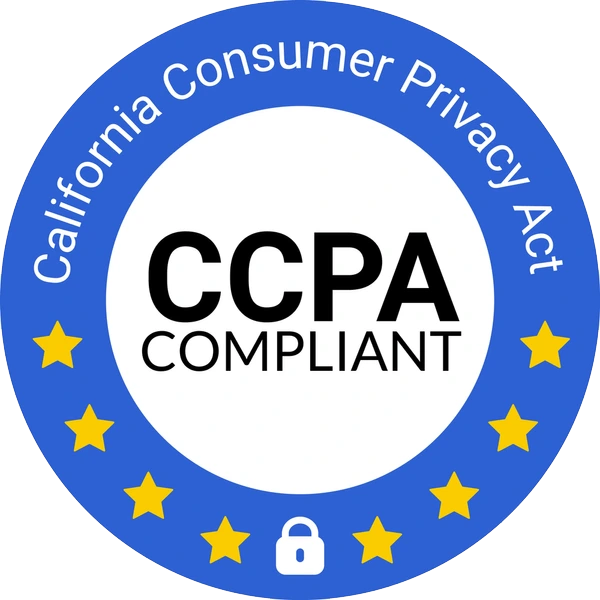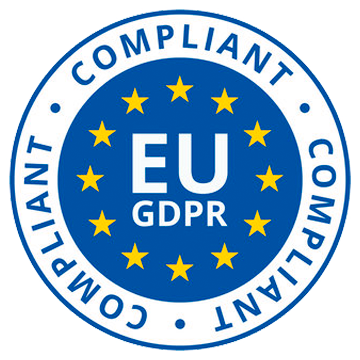Secure file sharing is an essential practice in today’s digital landscape. With the increasing volume of sensitive information being exchanged online, organizations must prioritize the security of their files to protect against data breaches and unauthorized access. In this ultimate guide, we will delve into the importance of secure file sharing, explore the key features of secure file sharing systems, guide you in choosing the right solution for your needs, and provide insights into implementing secure file sharing within your organization.
Understanding the importance of secure file sharing
In an era where data breaches are becoming increasingly common, understanding the risks associated with unsecured file sharing is paramount. Risks such as unauthorized access, data loss, and malware infections can have catastrophic consequences for individuals and businesses alike.
When it comes to file sharing, it is crucial to prioritize security. Unsecured file transfers can expose organizations to various risks, including:
- Data Breaches: Unsecured file transfers can lead to unauthorized access to sensitive information, resulting in data breaches and potential legal consequences. The impact of a data breach can be devastating, causing financial loss, reputational damage, and loss of customer trust.
- Data Loss: Without proper security measures in place, files can be lost, deleted, or corrupted, leading to the loss of valuable information. This can disrupt business operations, hinder decision-making processes, and result in significant setbacks.
- Malware Infections: Unsecured file sharing increases the risk of malware infections, jeopardizing both the integrity of the files and the overall security of an organization’s network. Malware can spread quickly and silently, causing system malfunctions, data corruption, and unauthorized access to sensitive data.
However, the risks associated with unsecured file sharing can be mitigated by implementing secure file sharing practices. Secure file sharing offers numerous benefits, including:
- Data Protection: Secure file sharing systems utilize encryption and security protocols to safeguard sensitive information. By encrypting files during transit and at rest, organizations can ensure that only authorized individuals can access and decipher the data, reducing the risk of unauthorized access and data breaches.
- Increased Efficiency: With secure file sharing, organizations can streamline collaboration, leading to improved productivity and faster decision-making processes. Secure file sharing platforms often provide features such as version control, real-time collaboration, and access controls, enabling teams to work together seamlessly and efficiently.
- Compliance: Many industries have regulatory requirements that mandate secure file sharing practices. By implementing secure solutions, organizations can ensure compliance with data protection regulations. This not only helps avoid legal penalties but also demonstrates a commitment to protecting sensitive information and maintaining customer trust.
Secure file sharing is not just a best practice; it is a necessity in today’s digital landscape. Organizations must prioritize the implementation of secure file sharing solutions to protect their data, maintain the trust of their stakeholders, and mitigate the risks associated with unsecured file sharing.
Key features of secure file sharing systems
Now that we understand the importance of secure file sharing, let’s take a closer look at the key features offered by secure file sharing systems:
Encryption and Security Protocols
One of the fundamental features of secure file sharing systems is encryption. Encryption ensures that files are not readable by unauthorized parties, even if they manage to intercept the data during transmission or access the storage. Advanced security protocols, such as SSL/TLS, further enhance the protection of files during transfer.
When it comes to encryption, secure file sharing systems employ various algorithms to convert the data into an unreadable format. These algorithms use complex mathematical functions to scramble the information, making it virtually impossible for anyone without the decryption key to decipher the content. This level of encryption ensures that sensitive files remain secure, even if they fall into the wrong hands.
In addition to encryption, secure file sharing systems also utilize security protocols like SSL/TLS to establish a secure connection between the sender and the recipient. These protocols encrypt the data during transmission, preventing any unauthorized access or tampering. By employing multiple layers of encryption and security protocols, secure file sharing systems provide a robust defense against potential threats.
User Authentication and Access Control
A reliable secure file sharing system includes robust user authentication and access control mechanisms. This allows organizations to grant access to authorized individuals while keeping unauthorized users at bay. User authentication can involve document passwords, biometrics, or two-factor authentication for an added layer of security.
User authentication is the process of verifying the identity of individuals who want to access the files. This can be done through various methods, such as passwords, where users need to enter a unique combination of characters to prove their identity. Biometrics, on the other hand, use physical characteristics like fingerprints or facial recognition to authenticate users. Two-factor authentication combines multiple methods, such as a password and a unique code sent to a user’s mobile device, to ensure a higher level of security.
Access control is another important aspect of secure file sharing systems. It allows organizations to define and manage user permissions, determining who can access, modify, or delete specific files. By implementing access control, organizations can ensure that only authorized individuals have the necessary privileges to work with sensitive data, reducing the risk of accidental or intentional data breaches.
Audit Trails and Activity Monitoring
Having comprehensive audit trails and activity monitoring capabilities enables organizations to track and monitor file access and modifications. This provides an essential layer of visibility and accountability, allowing organizations to detect suspicious activities or potential security breaches.
Audit trails record detailed information about file activities, such as who accessed a file, when it was accessed, and what actions were performed. This information can be invaluable in identifying any unauthorized access attempts or suspicious behavior. Activity monitoring, on the other hand, involves real-time monitoring of file activities, alerting administrators to any unusual or suspicious actions.
By maintaining audit trails and activity monitoring, organizations can ensure compliance with regulatory requirements and internal security policies. These features provide a transparent view of file access and modifications, allowing organizations to investigate any security incidents and take appropriate actions to mitigate risks.
Choosing the right secure file sharing solution
With various secure file sharing solutions available in the market, choosing the right one for your organization can be a daunting task. To simplify the selection process, consider the following factors:
Evaluating your business needs
Begin by identifying your organization’s specific requirements. Assess factors such as file size limitations, collaboration needs, integration capabilities with existing systems, and compliance requirements. This will help you narrow down the options and choose a solution tailored to your organization’s needs.
For example, if your organization frequently deals with large files, you may want to prioritize a solution that offers high file size limitations. On the other hand, if collaboration is a key aspect of your workflow, look for a solution that provides robust collaboration tools such as real-time document editing and version control.
Integration capabilities are also crucial, especially if your organization relies on other software systems. Look for a file sharing solution that seamlessly integrates with your existing systems, such as customer relationship management (CRM) software or project management tools. This will ensure a smooth workflow and minimize any disruptions.
Compliance requirements should not be overlooked, especially if your organization deals with sensitive data or operates in regulated industries. Look for a file sharing solution that offers advanced security measures and compliance certifications, such as ISO 27001 or SOC 2. This will give you peace of mind knowing that your data is protected and meets industry standards.
Comparing different file sharing platforms
Research and compare different file sharing platforms based on features, security measures, user experience, customer support, and pricing. Look for platform-specific benefits such as Sizle’s advanced analytics and collaboration tools that can enhance lead generation and deal workflows.
When comparing features, consider what is essential for your organization’s workflow. Some file sharing platforms offer advanced security features such as end-to-end encryption and granular access controls, while others focus on user-friendly interfaces and intuitive navigation.
User experience is also crucial, as it directly impacts how easily your employees can adopt and use the file sharing solution. Look for platforms that offer a seamless and intuitive user interface, with features such as drag-and-drop file uploads and easy sharing options.
Customer support is another important factor to consider. Ensure that the file sharing platform provides reliable and responsive customer support, whether through email, live chat, or phone. This will ensure that any issues or questions are promptly addressed, minimizing any disruptions to your workflow.
Pricing is, of course, a significant consideration for any organization. Compare the pricing structures of different file sharing platforms and ensure that they align with your organization’s budget. Some platforms offer tiered pricing plans based on the number of users or storage capacity, so consider your organization’s current and future needs when evaluating the cost.
Considering cost and scalability
Factor in the cost and scalability of the chosen solution. Ensure that the pricing structure aligns with your organization’s budget and growth plans. Consider additional features that may be required in the future as your organization expands.
Scalability is crucial, especially if your organization anticipates growth or changes in file sharing needs. Look for a solution that can easily accommodate an increase in users or storage capacity without significant disruptions or additional costs.
Consider the potential for future features and integrations as well. As your organization evolves, you may require additional functionality such as advanced analytics, workflow automation, or integration with other software systems. Choosing a file sharing solution that offers flexibility and the ability to integrate with other tools will future-proof your investment.
By carefully evaluating your organization’s needs, comparing different file sharing platforms, and considering cost and scalability, you can choose the right secure file sharing solution that meets your organization’s requirements and supports your workflow.
Implementing secure file sharing in your organization
Once you have chosen a secure file sharing solution that meets your organization’s requirements, it is crucial to implement it effectively within your organization:
Training your team on secure practices
Provide comprehensive training on secure file sharing practices to all employees. Educate them on the importance of secure file sharing, tips for creating strong passwords, and best practices for handling and sharing sensitive files. Regularly reinforce these practices to ensure ongoing compliance.
Training your team on secure practices is essential to minimize the risk of data breaches and unauthorized access. By educating your employees about the potential consequences of insecure file sharing, you can foster a culture of information security within your organization. Encourage them to use unique and complex passwords, enable two-factor authentication, and be cautious when sharing files with external parties.
Regularly updating and maintaining your system
Keep your secure file sharing system up to date by regularly applying software updates and patches. These updates often include bug fixes and security enhancements that protect against emerging threats. Additionally, regularly review and refine your access control policies to ensure they align with your organization’s evolving needs.
Regularly updating and maintaining your system is crucial to stay ahead of cyber threats and vulnerabilities. By promptly applying software updates and patches, you can address any known security issues and minimize the risk of exploitation. Conduct regular security audits to identify any potential weaknesses in your system and take necessary measures to mitigate them.
Ensuring compliance with data protection regulations
Maintaining compliance with data protection regulations is vital for any organization. Regularly review your secure file sharing practices alongside relevant regulations, such as GDPR or HIPAA, to ensure ongoing compliance. This involves implementing necessary safeguards and audit controls to protect sensitive data.
Compliance with data protection regulations is not only a legal requirement but also crucial for maintaining the trust of your customers and stakeholders. Ensure that your secure file sharing solution adheres to the necessary security standards and provides features like encryption, access controls, and audit logs. Regularly assess and update your data protection policies to align with evolving regulations and industry best practices.
By following this ultimate guide, you can secure your file sharing practices, protect your sensitive information, and establish a culture of information security within your organization. Remember that the safety of your files goes hand in hand with the smooth operation of your business, improved lead generation, and deal workflows. Choose a secure file sharing solution that aligns with your needs, and stay vigilant in implementing and maintaining secure practices. Safeguard your files today and enjoy the benefits of secure and efficient collaboration.
Implementing secure file sharing practices is an ongoing process that requires continuous monitoring and improvement. Stay informed about the latest cybersecurity trends and threats, and adapt your practices accordingly. Encourage your employees to report any suspicious activities or potential security breaches promptly. By prioritizing information security and fostering a proactive approach, you can ensure the confidentiality, integrity, and availability of your organization’s sensitive files.




